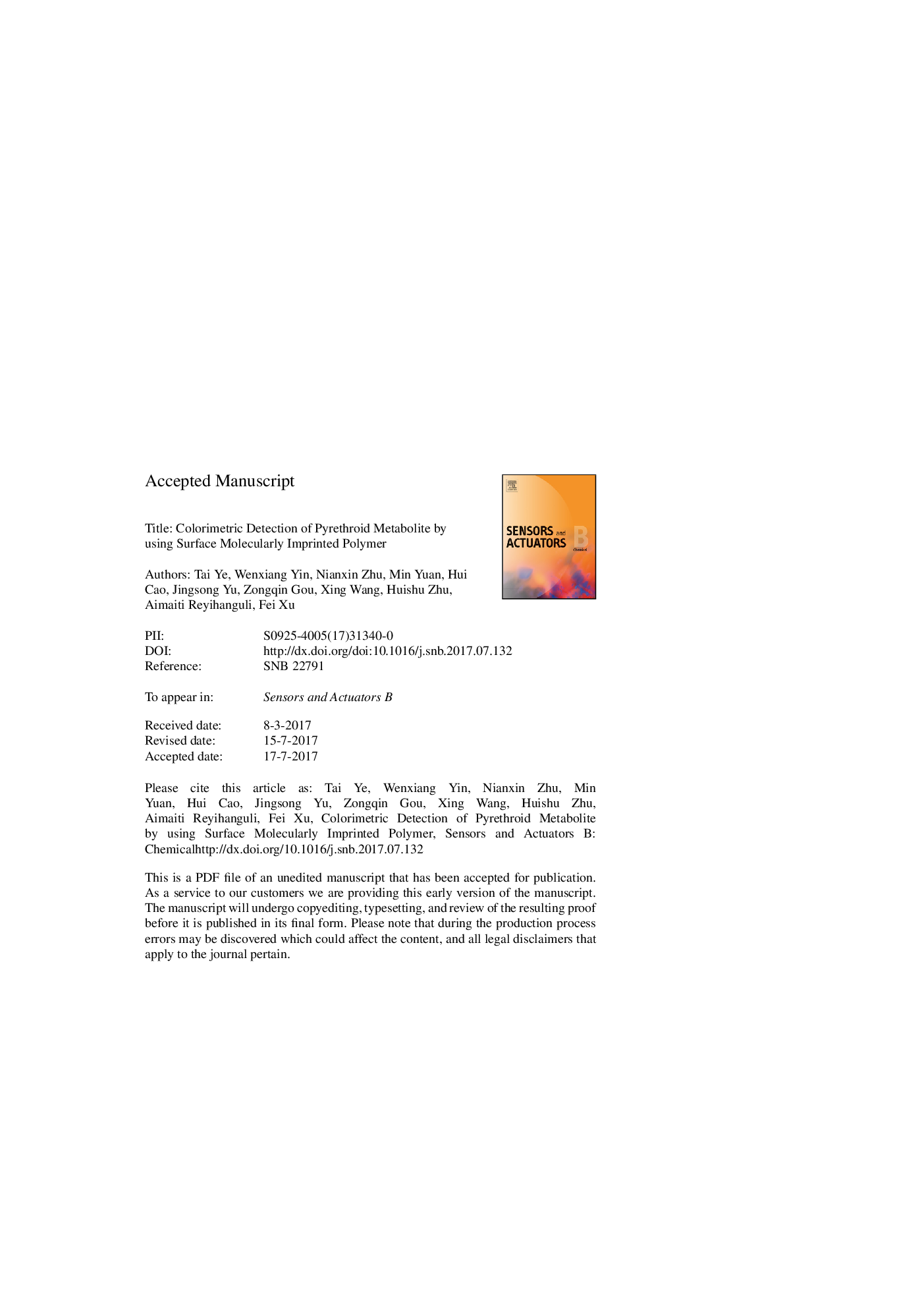ترجمه فارسی عنوان مقاله
تشخیص رنگ سنجی متابولیت پریتروئید با استفاده از پلیمر سطح مولکولی
عنوان انگلیسی
Colorimetric detection of pyrethroid metabolite by using surface molecularly imprinted polymer
| کد مقاله | سال انتشار | تعداد صفحات مقاله انگلیسی |
|---|---|---|
| 123086 | 2018 | 25 صفحه PDF |
منبع

Publisher : Elsevier - Science Direct (الزویر - ساینس دایرکت)
Journal : Sensors and Actuators B: Chemical, Volume 254, January 2018, Pages 417-423
ترجمه کلمات کلیدی
آفت کش های پریتروئید، تشخیص رنگی، پلیمر مشتق شده 3-فنووکسی بنزالدئید،
کلمات کلیدی انگلیسی
Pyrethroid pesticides; Colorimetric detection; Molecular imprinted polymer; 3-Phenoxybenzaldehyde;

